The country got under my skin the first night—platform lights, a slow train sighing, vendors wheeling boxes of apricots and that low murmur people use when everyone is leaving and arriving at once. I carried my bag past families saying goodbyes that were really see-you-laters and climbed into a sleeper car that smelled faintly of tea and dust. The window showed nothing for a while, just dark fields and the occasional switch of stars to station lamps. That first ride set the tempo for the trip: long stretches of quiet, then sudden, vivid scenes that put you right back in the world.
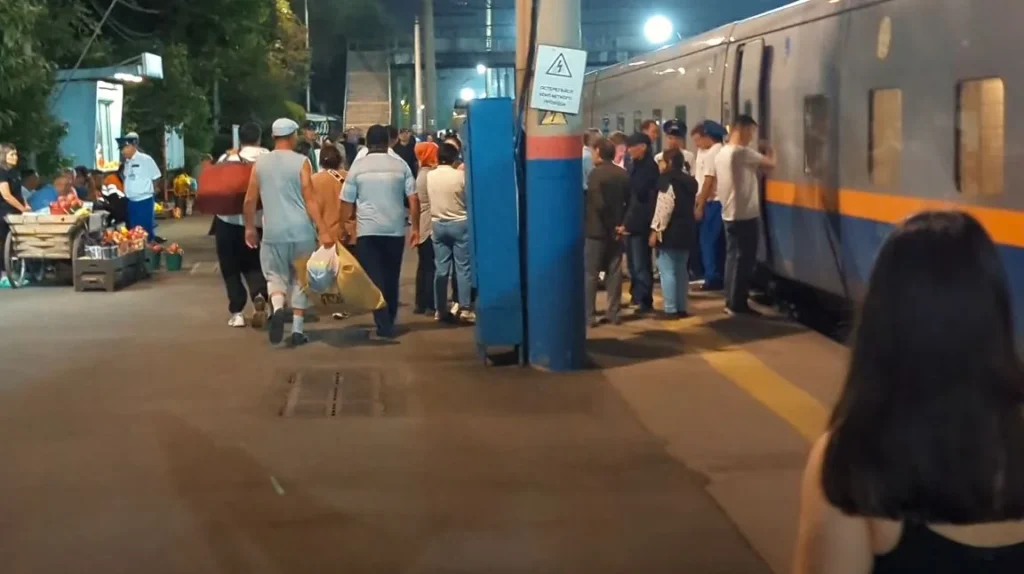
Astana, All Angles
I started in the capital because I wanted to see how a modern city sits on an old landscape. From high up you understand two things quickly: the grid is broad and the light is generous. Blocks look disciplined from above, but at ground level the wind carries voices and kids scooter past monuments like they’re just big pieces of playground equipment.
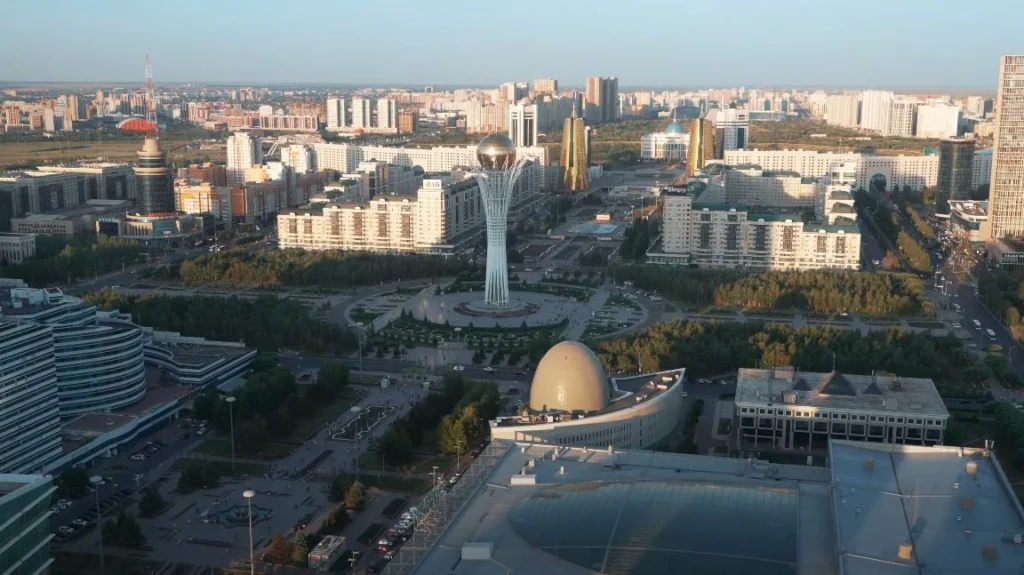
A Quick Loop That Makes Sense On Foot
- Begin at the base of the Bayterek (the silver-white tower with the gold sphere). Don’t rush the elevator; the plaza is the real show—couples posing, office workers cutting diagonals across the stone.
- Walk the long axis toward the government quarter. Watch how the buildings line up; stand still for a minute and let the traffic wash around.
- Detour for coffee and warm pastries from a small kiosk—no fuss, just fuel. I stood under a plane tree and watched shadows slide across the pavement.
Micro-Moments That Stuck With Me
- A guard adjusting his cap before smiling at a child who saluted him back.
- Teenagers filming each other on the steps, laughing at bloopers.
- A cyclist in a neon jacket looping the plaza over and over, looking like a metronome for the city.
Photo Timing That Helps
| Spot | Time of day | Why it works | Where to stand |
| Bayterek plaza | Late afternoon | Long shadows, soft gold on buildings | Face the tower from the central lawn and step 15–20 meters back for symmetry |
| Broad boulevard | Blue hour | Taillight trails frame the skyline | Median island near the crosswalk—watch the signals |
| Park edge | Morning | Clean light and fewer people | Under the first line of trees, shooting across to the facades |
The Geometry and Hush of a Grand Mosque
I crossed a huge plaza, the kind that makes you feel honest about your size. The minarets rose like clean white lines against a patient sky. On the steps I slowed down, camera tucked, shoulders relaxed; you read a place like this with your feet first. I didn’t rush the interior—light on tile, the faint echo when someone clears their throat, a boy straightening his father’s cap. Ten minutes later I walked back out squinting, the marble throwing light back at me.
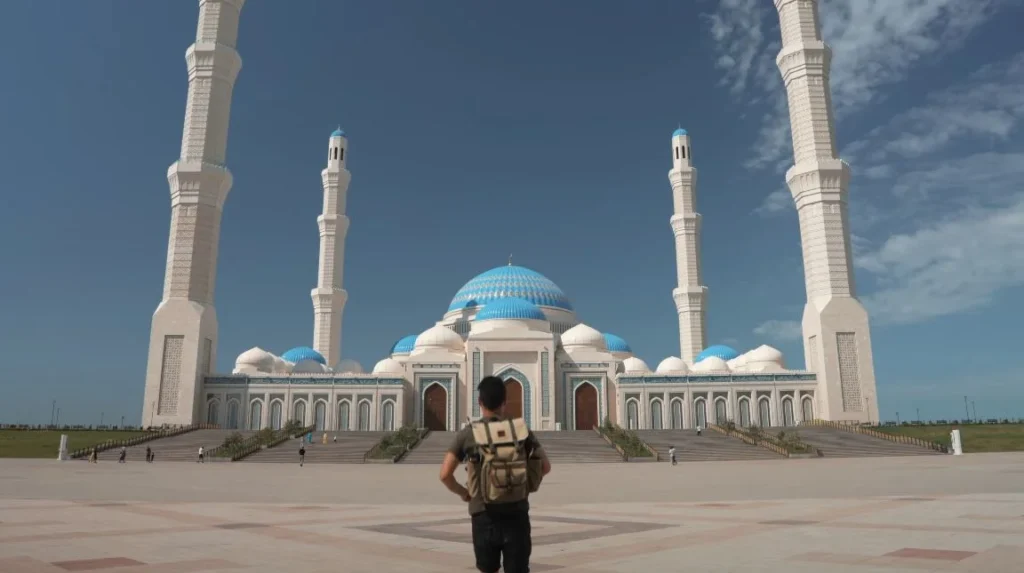
Quick Etiquette List
- Shoes off where asked; follow local cues.
- Dress modestly; headscarves available at many entrances.
- Photos are usually fine in courtyards, less so during prayer inside—ask or wait.
The Red Road: Charyn Canyon
Everyone told me the canyon felt like a smaller cousin of those big red American landscapes. Maybe, but the silence here has it’s own tone—drier, with a hint of grass. The approach road runs through open country, then the earth falls away and you’re staring at teeth of rock stacked in patient layers. I parked, gulped water and took the path down with a mix of excitement and that little voice reminding you it’ll be hotter on the way back.
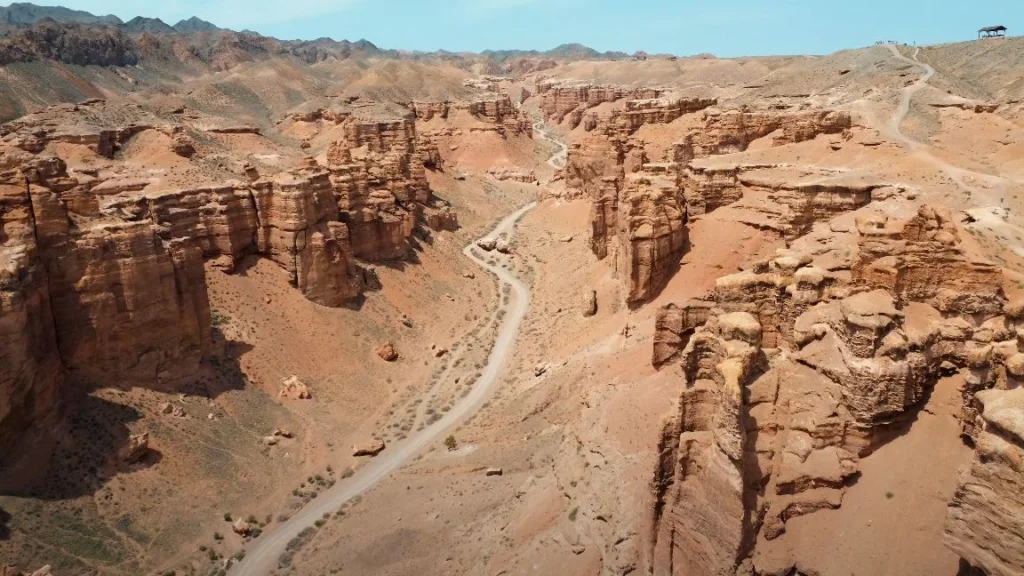
How I walked it?
The main trail slips into the Valley of Castles—the stone here plays tricks with your sense of distance. I stopped at the first outcrop to check the wind; it came from the west, warm and carrying grit. The path is obvious, but don’t fight the urge to wander onto side spurs. Each few meters the walls change attitude—bulging, scalloped, pinched—and you get new sightlines back to the road.
At the bottom a dry riverbed pretends to be a footpath until you hear water ahead. I sat in the thin shade of a broken overhang and watched two hikers eat peaches with the concentration of surgeons. No rush. The canyon allows that.
Checklist I actually used:
- 2–3 liters of water per person (it disappears faster than you think).
- A brimmed hat; sunglasses you won’t cry over if they get scratched.
- Light scarf or buff—good for dust, better for sun on your neck.
- Trail shoes with grip; the gravel skates out under soft soles.
- One snack with salt (roasted nuts) and one snack you’ll look forward to (dates, cookies).
Three reliable vantage points:
- First rim pull-off: step left of the main overlook and kneel—shoot past the lip to exaggerate the drop.
- Mid-trail butte: a short scramble up a dirt cone; faces southwest. Late afternoon glow.
- River bend: where the green sneaks in, frame the water ribbon with cliffs punching skyward.
Pacing the heat
I started down at 9:20 a.m., touched water by 10:40 and was back at the car a little after noon. The climb out is slow-burning. Every time I wanted to power up, the sun reminded me: not a race. I found shade, sipped and watched dust motes hang like quiet punctuation.
The Drowned Forest: Kaindy Lake
The lake appears like a secret someone whispered into the mountains and then forgot to retrieve. One second you’re among spruce and compacted dust and then the path opens onto turquoise water threaded with the trunks of drowned trees. The surface is glassy enough to reflect a hawk for a beat, then a breeze scribbles it out. I stood with my hands on my pack straps and didn’t talk for a while; it’s that kind of place.
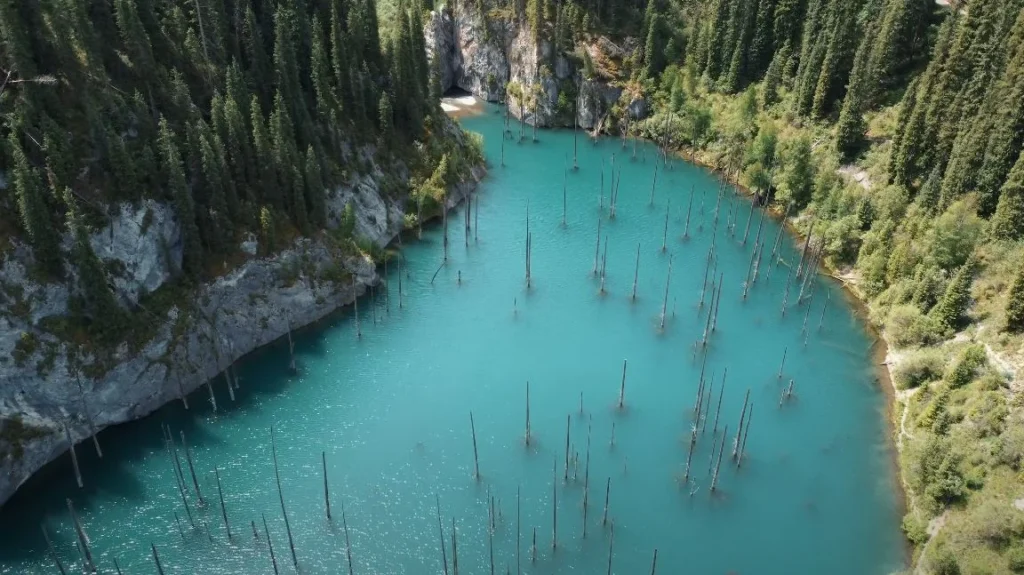
Getting There Without Guesswork
- Road feel: the last stretch can be rutted; a higher-clearance vehicle helps, but I’ve seen sedans do it slowly.
- Trail start: look for the informal lot where vendors sell tea; the path cuts left around low brush and then dips.
- Footing: roots, a bit of scree and short steeper bits—nothing technical, but your ankles will be happier in real shoes.
The Moment The Color Hits
From above, the lake looks painted, but up close the water is milky and alive. The trunks pierce straight up, bark long gone and the underwater branches hold their shape like ghosts of Christmas trees. I crouched at the bank and traced a line with my finger where the silt fades to blue. A family set out a little picnic—flatbreads, cucumbers, thermos tea—and offered me an apple without ceremony. I took one, because saying yes is how this country keeps you fed.
A short note on drones and calm:
- Wind channels weirdly through the valley; even stable drones wobble.
- Lift off well back from the bank and keep altitude conservative.
- More important: listen. If the shore is quiet and people are just sitting, let them have that. Fly another day.
Weather flips that matter:
| Sign | What it meant for me | What I did |
| Thin cloud sliding over the ridge | Temperature dropped fast | Pulled a light shell and kept moving |
| Sudden gusts pushing up-valley | Choppy reflections, camera shake | Leaned into trees for support, raised ISO |
| Light rain freckles on the water | Mud slick on steeper bits | Shortened poles, slowed cadence |
If You Have an Extra Hour
Walk the shoreline to the slight rise on the opposite side. From there the trees feel denser, the color deeper and you can frame long diagonals of trunks like a forest caught mid-breath.
Kolsai Lakes: Earn Your Picnic
The chain of lakes sits close enough to Kaindy that your legs will think it’s all one story. It isn’t. The water here is darker, moodier and long enough that tiny boats look like toys sprinkled across a slate table. I went up steady, listening to the sound hiking poles make on rock: click, pause, breath. Then thunder shuffled along the ridge and everyone became a little chorus checking the sky.
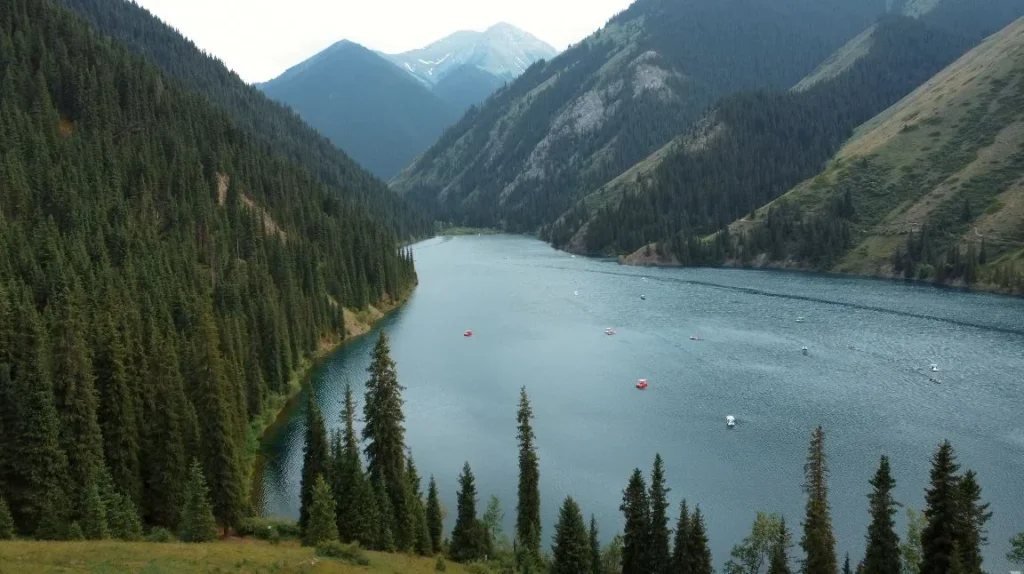
Two ways to spend the day:
- Lazy: reach the first lake, claim a patch of grass, swim if your heart can take cold, nap, read, repeat.
- Earned: push toward the second lake; elevation adds up and rewards stack: fewer people, wider views.
Almaty: Leafy Streets Before the Mountains
Almaty moves softer than the capital. Pavements run under high trees, old wooden houses lean a little and cafés spill onto corners with the confidence of regulars who’ll be back tomorrow. I walked without a plan, which is the right plan here: markets, parks, an espresso that turned into two because the barista slid a plate of honey cake across the counter and said, “Try.”
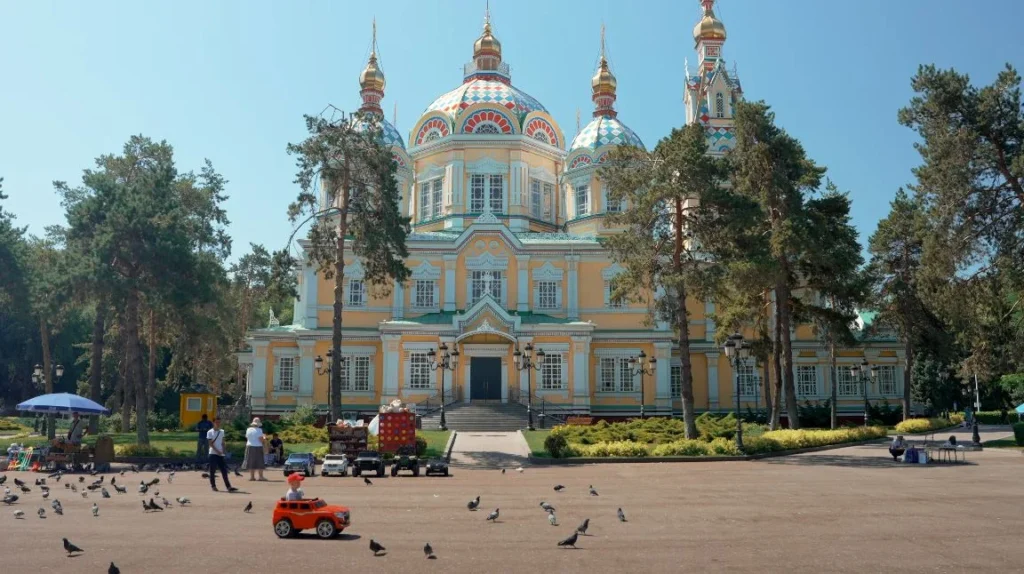
I spent a long time in the park, under the candy-colored Ascension Cathedral. It’s wooden, earthquake-smart and almost too cheerful for it’s own good. Families rented tiny electric cars for their kids and steered them gently around pigeons that refused to care. Bells rang or maybe I imagined them. Either way, it felt like the city asking me to slow down.
A Half-day Wander That Actually Works
- Green Bazaar (Zelyonyj): bright fruit pyramids, coils of dried kurt, vendors calling numbers across aisles. I bought apricots and a fist-size round of cheese, then two more because the first vanished before the street corner.
- Park to cable car: from the cathedral, drift toward Kok-Tobe. The cable car isn’t essential, but the hill gives a quick orientation—city, mountains, the line where heat becomes weather.
- Arbat area: buskers, book stalls, street portraits, the sound of spray paint on cardboard.
Small Notes From The Street
- Lanes smell like shade.
- Drivers stop if you step with conviction; don’t test that theory twice.
- Water sellers appear when the sun gets bossy. Coins do the trick, smiles finish the transaction.
Where to sit and not move for a while
Find a bench that faces a playground. Order plov from the nearest canteen. Watch two kids negotiate over a broken toy dump truck with diplomacy that would embarrass adults. You won’t notice the hour leaving.
Tiles, Lanes and a Blue Dome
I wanted something older than boulevards, so I took a long bus ride and ended up in a city where the alleys carry heat like pockets. Adobe walls on either side, a shade tarp slung low, tables stacked with cotton dresses and enamel teapots. At the end of the lane, a blue dome so intense it looked like someone had colored outside the lines and liked the result.
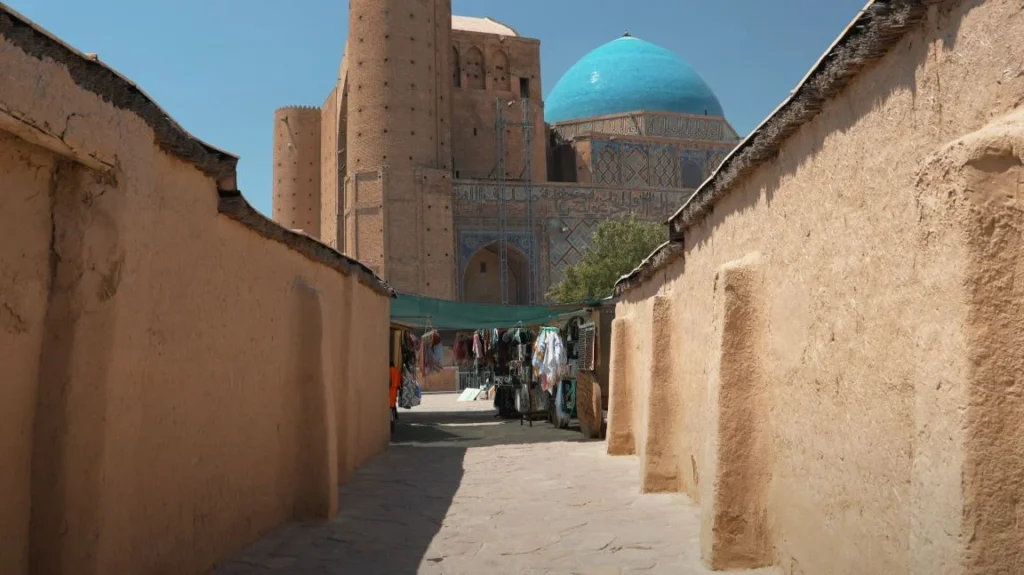
I pressed my hand to the wall to steal a little cool from it and listened to the murmur of haggling that hasn’t changed in centuries: a number, a counter, the pause where both pretend to consider walking away. No one walks away. Not really.
The Pattern That Pulls You In
The tilework isn’t flat decoration—it’s mathematics you can touch. Repeating geometry, knots of script, borders that argue and then settle. Up close, you start noticing the human parts: a glaze bubble, a hairline crack, a place where an artisan corrected the angle and left it that way because the wall would hold either version.
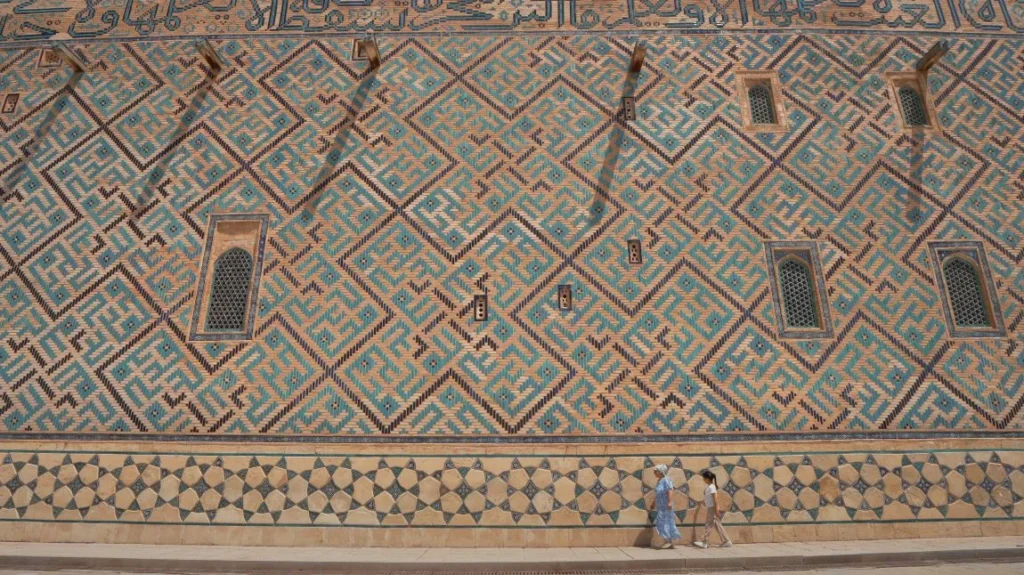
A woman selling embroidered skullcaps told me her father set tiles here as a teenager. “He was proud of straight lines,” she said, tapping the rim of a cap. “When he got old, his hands still moved like this,” and she traced an invisible border in the air.
Five Look-and-Learn Stops in The Complex
- Northern portal shadow: stand where the shade cuts diagonally; you’ll see how color brightens when the sun is clipped.
- Courtyard corner: your footsteps sound different on the old stone; listen.
- Side iwan with scaffolding: craft is ongoing; take one picture, then put the camera down and watch hands.
- Tile panel repaired in two eras: old glaze, new grout—time having a conversation.
- Market edge: food smoke from flatbread ovens pulls you out of reverence and straight into hunger.
Use /mnt/data/Abbandand building.JPG later in “Ruins of the Recent Past.” Keep this section clean and tile-focused.
The Table That Stops Time
A road day ended with a table that wouldn’t stop growing. Every time I thought we were at “the meal,” another plate appeared with the seriousness of a moon landing. Bread basket, salads, sweets, a platter of meat and onions crowned with yellow coins of potato—the famous beshbarmak—and the quiet hospitality that says sit, eat, we’ll talk after.
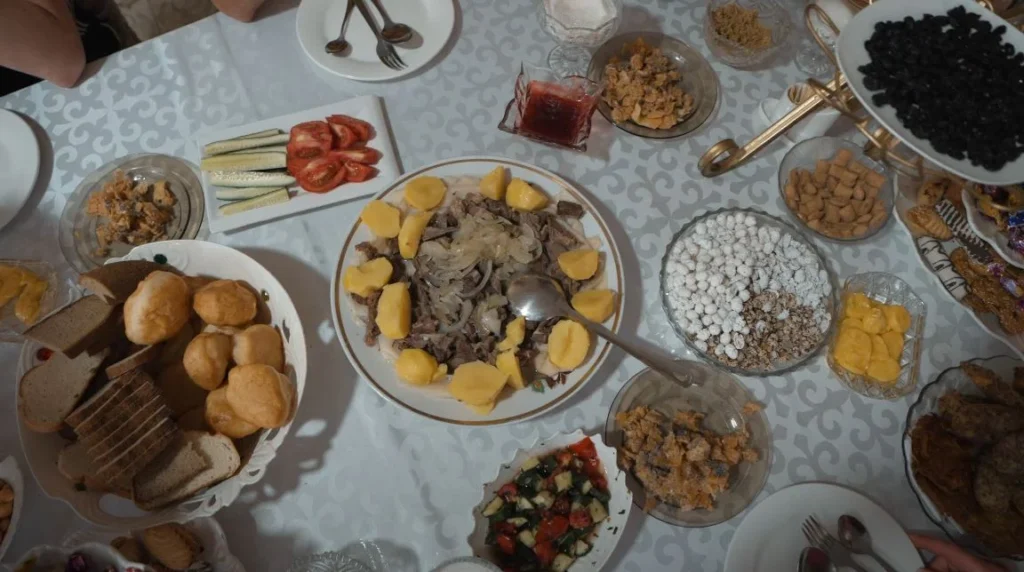
My host watched me choose where to start like a teacher waiting to see whether the student had done the reading. I tore bread first, because bread first is always safe. Then a square of salad, cucumbers snapping, tomatoes leaving that sweet-acid juice on the tongue. Tea arrived again, then again, poured the way people who care pour—steady, two inches from the rim, no waste.
What I Learned in One Sitting
- Don’t race the table. Food isn’t a finish line; it’s a river.
- Beshbarmak literally means “five fingers.” I used a fork politely, then put it down when the aunt across from me shook her head with a smile. Hands are fine. Hands are how you taste the point of it.
- Kurt (dried yogurt balls) is not candy. It’s sour-salty, small and perfect between bites of richer dishes.
- Tea is conversation punctuation. A refill means keep talking; an empty cup that stays empty means business is done or everyone is full and content.
Food Decoder
| Dish | What it is | When it appears | How not to overthink it |
| Beshbarmak | Boiled meat (often horse or beef) with flat noodles, onions, potato | Center of celebrations, family gatherings | Try a small portion of each cut; onions are part of the flavor, not garnish |
| Baursak | Puffy fried dough | Arrives early, sticks around | Tear in half, share the second piece; honey dip if offered |
| Shalgam | Carrot-turnip salad with vinegar bite | With the cold plates | Bright palate reset; don’t drown it in bread |
| Plov | Rice with meat, carrots, sometimes raisins | Lunch staple, heavy evenings | Spoon from the edge; the good oil pools toward the center |
| Manty | Steamed dumplings | Casual dinners, street stalls | Bite and sip the broth; napkin ready |
| Kurt | Dried yogurt balls | Snack plate, tea time | One at a time; a little goes a long way |
| Chak-chak & cookies | Honeyed fried pieces, sweets | End of the meal, tea again | Sweet teeth only—pace yourself |
At one point a cousin raised a glass, paused and told a short story about his grandfather building a fence that outlived three dogs and a winter no one liked to remember. Everyone laughed the way families laugh at their own weather. I understood half the words and all of the feeling.
Quiet Rooms: Mosque and Church
I like placing two very different sacred spaces next to each other in a day. It keeps me honest. In the morning a mosque with geometry so crisp it feels like the building will stand even if the planet tilts. In the afternoon, an Orthodox church glowing from the inside with gold panels and dark wood, the air warm with candle wax and a choir practicing in a room you can’t see.
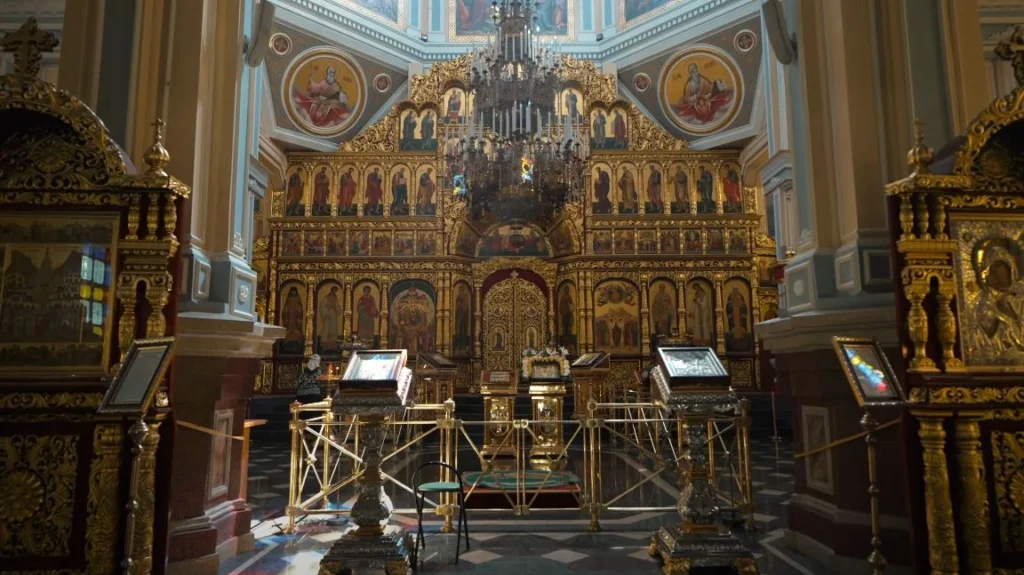
In the mosque courtyard, kids chased each other and invented rules. Inside, lines of worshipers moved with a kind of collective gentleness that you feel before you understand. In the church, every step sounded too loud until a woman flicked her wrist and the candle she lit shivered the shadows. A man in a gray sweater crossed himself so carefully it looked like calligraphy.
Etiquette that kept me welcome:
- In both spaces: no flash, no loud whispers, no phone rings.
- In the mosque: shoes off where indicated; shoulders and knees covered; headscarves provided if needed.
- In the church: pause near the entrance and watch what people do; if icons are kissed, step aside; buy a candle if you’re staying a while—it’s a small contribution that also buys you time to be there.
Night Noise: A Festival, A Flag, A Chorus
Kazakhstan by day is measured; by night, the volume nudges up. I followed a river of people into a festival where the stage threw reds and blues across lifted faces and someone waved a flag that cut a neat line down the crowd. A guitarist in a white tee leaned into a solo that made the woman beside me shout something I didn’t catch, then laugh, then sing with everyone else.
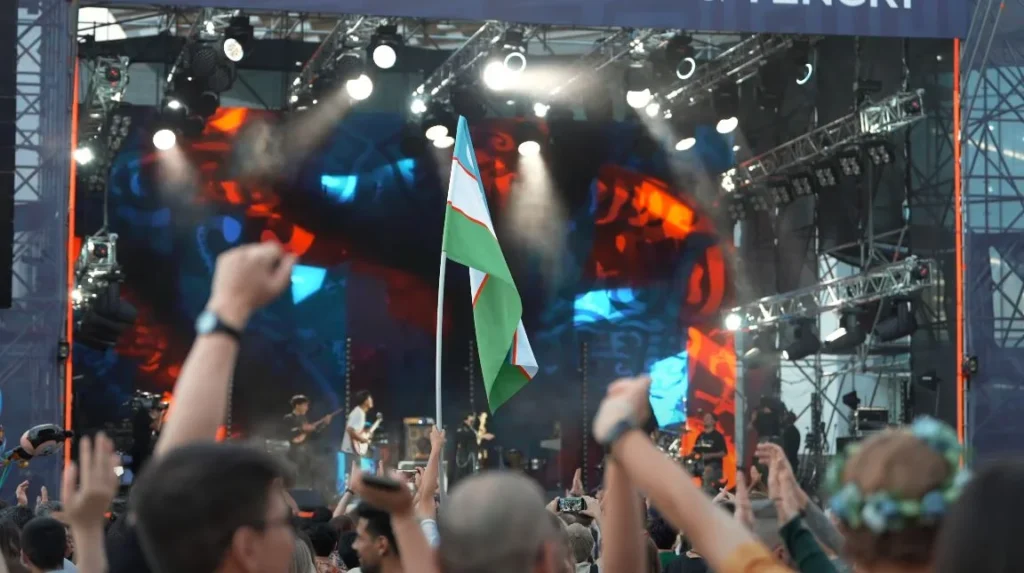
Ruins of the Recent Past
A taxi driver took a slow turn, tapped the brakes and pointed with his chin. “Old house,” he said, though it was more of a shell—concrete ribs, patterned grillework still clinging to the facade like lace someone forgot to remove before a fire. I asked him to stop. Wind moved through the empty window frames and came out sounding like a sigh.
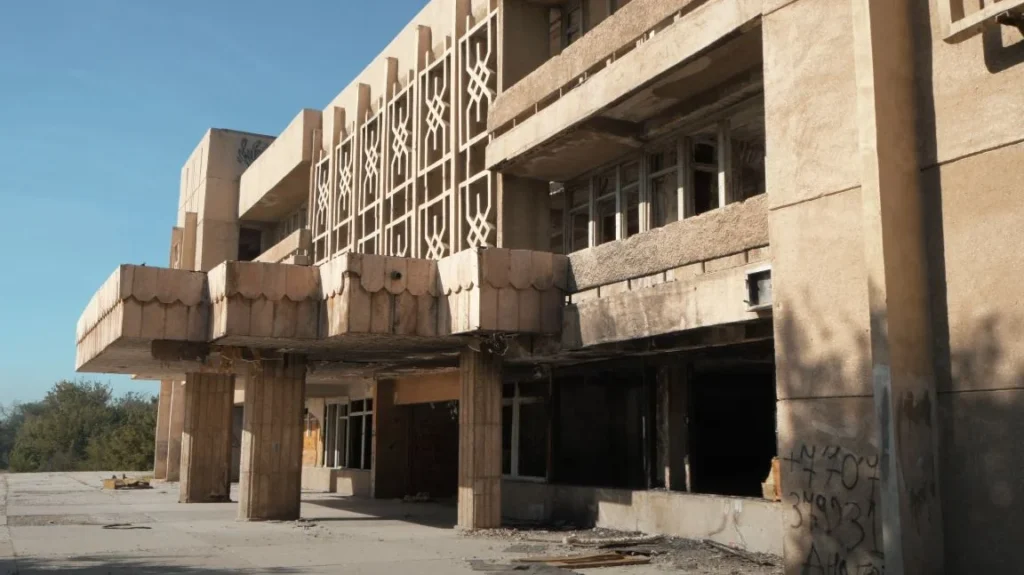
I worked the perimeter first. Weeds at the edges, a rusted pipe, scattered glass that glittered in the sun with an attitude it hadn’t had when it was a window. There’s a smell to places like this—warm dust and something metallic. I ducked under a low beam just to see the lobby. Soot on the ceiling, a strip of surviving terrazzo floor, a door half-open to nothing. The structure felt stubborn: “I’ll hold,” it seemed to say, even as pieces flaked off with each season.
A kid on a scooter rolled by and watched me take pictures. He said his grandmother remembered dances here in the 80s. “Everyone dressed up,” he added, then shrugged and kicked off again. That shrug said everything about time in Kazakhstan: it keeps moving. We keep moving with it.
Photo tip from the site
- Late light makes the facade pattern read like a textile.
- Step back far enough to keep the porch canopy in frame; it anchors the geometry.
- If you shoot inside, angle down; the floor tells a cleaner story than the ceiling.
DIY Itineraries: How I’d String It Together
I ended up mixing cities and wild spaces and it felt right—one day with pastry flakes on my shirt, the next with dust in my teeth. Here’s a plan you can actually run without sprinting.
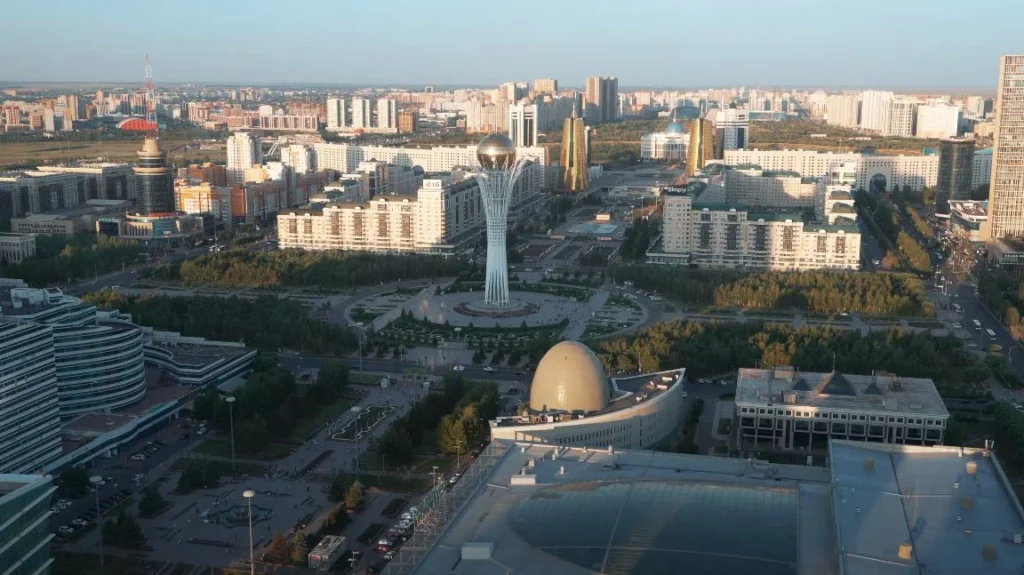
7–10 Day Route Planner
| Day | Base | Move | Highlight | Sleep |
| 1 | Astana | Airport → city by taxi or Yandex Go (30–40 min) | Bayterek plaza loop; mosque courtyard at dusk | Central hotel/guesthouse |
| 2 | Astana → Almaty | Day train or evening flight | Morning coffee crawl, quick museum stop; arrival dinner in Almaty | Near Panfilov Park |
| 3 | Almaty | Walk + cable car | Ascension Cathedral, Green Bazaar, Kok-Tobe overlook | Same base |
| 4 | Almaty → Charyn Canyon | Car hire/shared tour (3–3.5 hrs) | Valley of Castles hike; golden-hour rim shots | Return to Almaty or simple lodge near canyon |
| 5 | Kaindy Lake | Car (1.5–2 hrs from canyon; 3–3.5 from Almaty) | The drowned-forest water and shoreline walk | Saty village guesthouse |
| 6 | Kolsai Lakes | Short drive from Saty | First-lake picnic or hike toward the second | Saty village guesthouse |
| 7 | Back to Almaty | Car (3–4 hrs) | Lazy recovery: bathhouse or café crawl | Almaty |
| 8–9 | Heritage town (blue dome) | Night train or regional flight + bus | Bazaar alleys, tilework, slow evenings | Old-town guesthouse |
| 10 | Return | Flight to hub city | Final market sweep for tea & sweets | — |
Notes I wish I’d had on day one:
- Trains sell out on weekends; buy two days ahead if you’re picky about bunks.
- Car hire with driver isn’t defeat—it’s a good conversation and fewer worries about road shoulders, which are sometimes ambitions rather than realities.
- Saty village books up in high season; ask your host about meals—they’re often the best of the trip.
Practical Stuff That Actually Helps
I wrote these on my phone between buses, so they read like they were used, not invented.
Seasons and Weather
- Late spring (May–June): snow still clings to high passes; valleys are green; rain can appear, make a point, leave.
- Summer (July–August): city heat, canyon heat, lake relief; plan hikes early or late.
- Autumn (Sept–Oct): the color show; crisp mornings; perfect for long walks and long photos.
- Winter: bright sun on snow, serious cold. Trains are cozy; lakes can be otherworldly if you’re outfitted.
Getting Around
- City rides: Yandex Go works well; drivers appreciate a pinned drop more than a paragraph.
- Intercity: trains are comfortable; bring snacks and curiosity. Night trains are social—tea keeps everyone talking.
- Cars: a compact will do the cities; for Kaindy and rougher spurs, higher clearance helps. Gas stations cluster—top up when you see one.
Money & Connectivity
- Cards are fine in cities; cash for village shops and some guesthouses.
- SIMs sold at airports and malls—bring passport. Coverage is strong along main routes, thinner in the canyons.
- ATMs exist but don’t assume your first try works; have a second bank card.
Staying Healthy, Staying Kind
- Tap water varies; I used a small filter and felt smug about it.
- Sunscreen disappears fast in canyon heat; reapply like it’s a job.
- Invitations to tea are invitations to talk. Accept when you can.
- Ask before photographing people; most will nod yes with a small smile.
- Shoes off when you see shoes off. Easy rule.
Packing List That Didn’t Let Me Down
- Trail shoes with grip; socks that dry overnight on a radiator.
- Light rain shell, sun hat, warm layer for nights at altitude.
- Small first-aid kit: blister plasters, painkillers, rehydration salts.
- Headlamp, because phone lights feel dramatic and underpowered at the same time.
- Power bank and a short multi-USB cable.
- Refillable bottle and a tiny garbage bag for snack wrappers (the steppe is not your bin).
Fast food words to learn
- “Chai?” – Tea? The right answer is yes.
- “Spasibo / Rakhmet.” – Thank you (Russian / Kazakh). Use both; people notice.
- “Skol’ko?” – How much? Smile when you ask; it helps the math.
Budget Snapshot
Numbers swing by season and taste, but this is the neighborhood. I tracked receipts in a notes app; these are the ranges I kept seeing.
| Item | Low (USD) | Mid (USD) | What changes the price |
| City coffee + pastry | 2–4 | 5–7 | Fancy café vs. bakery window |
| Hearty local meal | 5–8 | 9–15 | Meat cut, touristy menu, drinks |
| Metro/Bus ride | 0.25–0.50 | — | Tap card vs. paper ticket |
| Yandex ride (cross-city) | 3–6 | 7–10 | Rush hour, rain, airport fees |
| Night train (couchette) | 18–30 | 35–55 | Class, booking lead time |
| Domestic flight | 35–70 | 80–120 | Sale windows, baggage |
| Day car hire w/ driver (fuel incl.) | 70–100 | 120–160 | Route length, waiting time |
| Canyon/park entry | 1–3 | — | Per person + car fee sometimes |
| Guesthouse (village, pp) | 12–20 | 25–40 | Meals included, private bath |
| City hotel (dbl) | 35–60 | 70–120 | Location, newness, breakfast |
Night Noise: A Festival, A Flag, A Chorus
The city warmed up as the sun dropped. Street stalls flipped on lights, a tide of people moved toward the park and by the time I reached the gate the bass line was already doing the heavy lifting. I drifted with the crowd until the stage filled my vision—rigging like scaffolds, screens pulsing, a singer bouncing on the balls of her feet.
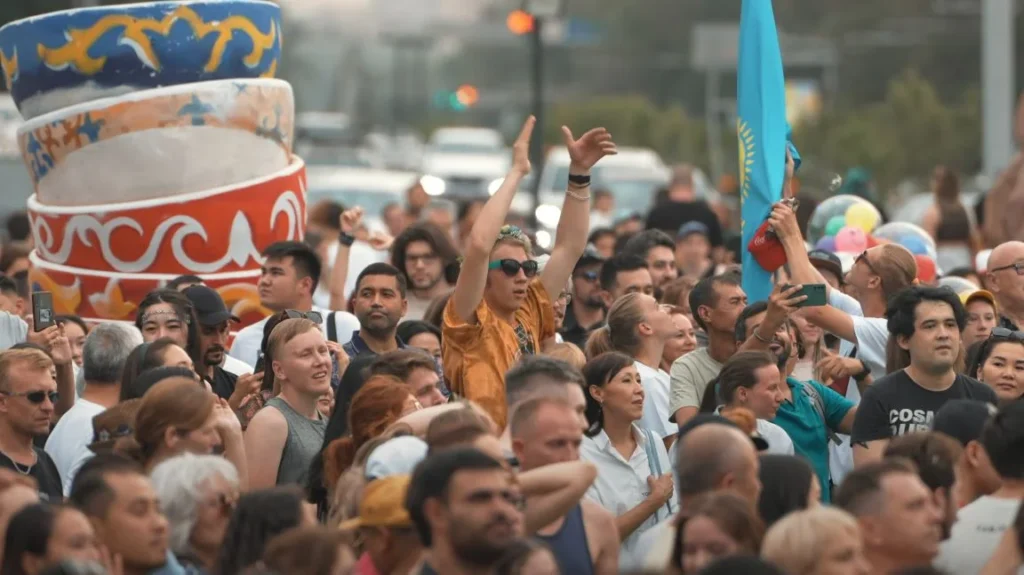
A flag went up near me—quick ripple of green, white and blue—and every phone lifted in reflex. A circle formed where strangers made space for two kids to dance like they owned the place. Between sets I bought a lemon soda from a cart and stood on my toes to see the drummer check his snare with four sharp taps. The man next to me shouted the chorus on time but mumbled the verses. I did the same. It worked.
How I thread a big crowd without losing the plot:
- Entry: arrive one act late—lines shrink, energy’s already warm.
- Where to stand: front-left of house sound tent; good sightline, cleaner audio, less squeeze.
- Exits: pick a fixed landmark (food trucks, sculpture) for rendezvous; don’t trust texts when the network chokes.
- Ears & eyes: a pair of foam earplugs lives in my pocket; a microfiber cloth fixes lens sweat in one wipe.
- Night move: ride-share two blocks away from the venue perimeter, not at the choke point.
A woman in a flower crown asked where I was from, then handed me a phone to take a photo of her group. No stage behind them, just faces and the messy joy of being outside together. I gave a thumbs up like a proud uncle and walked off with ringing ears and the sense that the city had exhaled.
Mistakes I Made So You Don’t Have To
- Underestimating distances. The map looks polite; the steppe doesn’t care. Build buffer hours between big stops.
- Saving water “for later.” Later arrives hotter. Drink on the way down and on the way up.
- Assuming museum hours. Monday closures hit hard; check the door sign, not just your memory.
- Forgetting small bills. Markets move faster with exact change; large notes slow the dance.
- One-pair-of-shoes hubris. Canyon grit eats soles; bring a backup or a sturdy insole.
- Skimming invitations. “Tea?” may include dinner. Clear your evening; it’ll be worth it.
Ultra-Compact Packing List
| Item | Why it earns it’s space | Notes |
| Light rain shell | Mountain tantrums, city drizzle | Packs into it’s own pocket |
| Mid-layer (fleece or light puffy) | Cold mornings, late buses | Dark color hides bus seats’ stories |
| Sun hat + buff | Canyon glare, dust control | Buff doubles as mask or towel |
| Trail shoes + city sneakers | Grip and comfort split | Dry trail shoes overnight with paper |
| 2–3 quick-dry tees, 1 long sleeve | Rotate, rinse, repeat | Neutral colors for photos |
| Travel pants + shorts | Mosque/church modesty vs. heat | Pants with zip pocket for trains |
| Filter bottle | Tap uncertainty fix | Saves cash, reduces plastic |
| Tiny first-aid kit | Blisters, headaches, salt tabs | Add personal meds |
| Power bank + short cable | Trains, long drives, festivals | Keep it charged; don’t lend forever |
| Headlamp | Guesthouse yards, early starts | Hands free beats phone flashlight |
| Earplugs + eye mask | Night trains, festival neighbors | Sanity kit |
| Small gifts from home | Tea guests, new friends | Stickers or keychains play well |
Parting Shot
On the last morning I walked out before the city decided what day it wanted to be. Air cool enough to make coffee steam look dramatic, streets still sweeping themselves awake. I took the long path by the river, then cut across a square where a boy kicked a ball against a step and chased the bounce like it was new physics. The mountains held their usual blue line. Trains somewhere carried fresh stories east and west.
Kazakhstan keeps handing you contrasts: a plaza built to impress and a tea table designed to disarm; red rock that steals your breath and a hill of spruce that gives it back; a tile pattern repeating forever and a dance that only happens once. I left with dust on my cuffs and a promise to come back with better jokes and more time.

